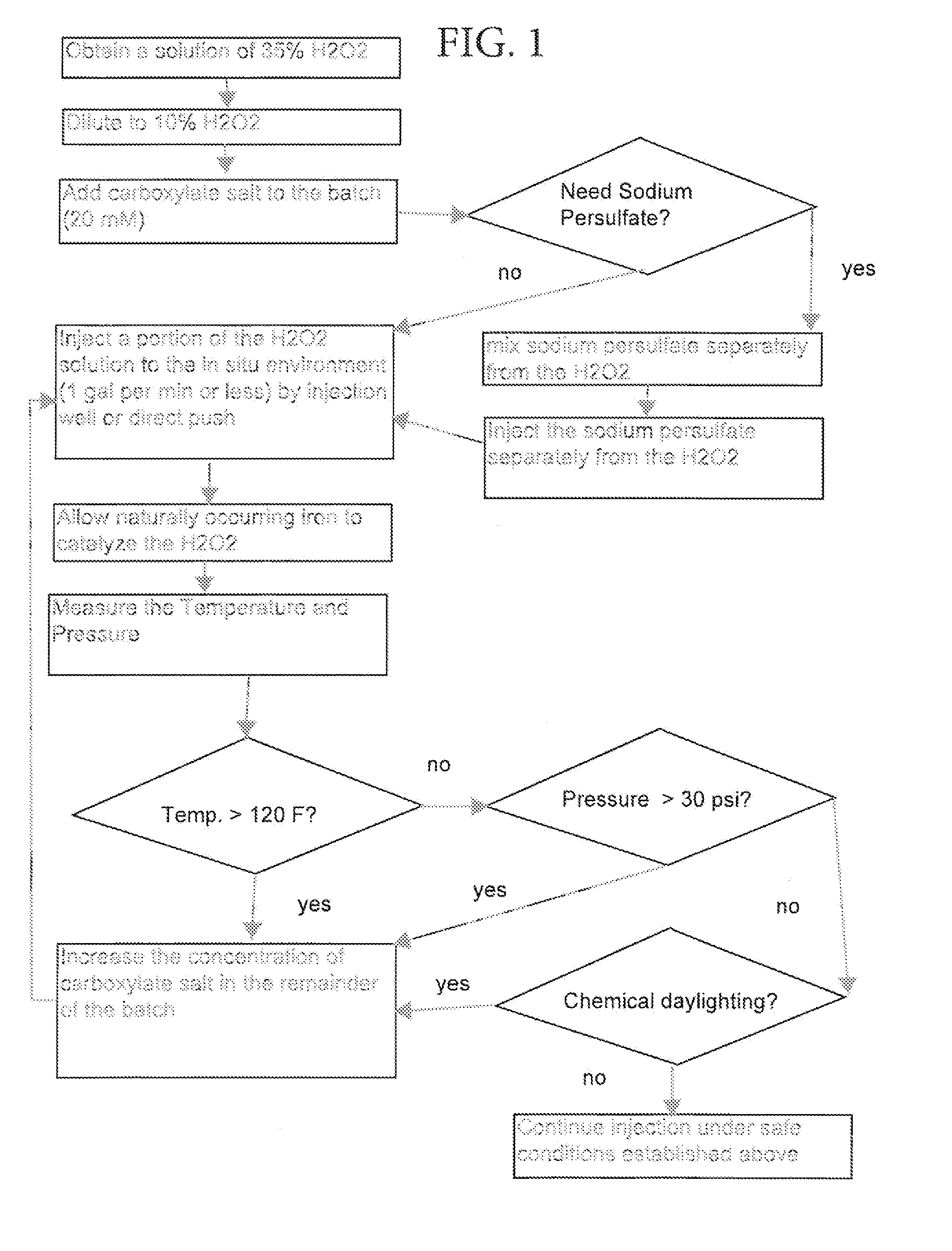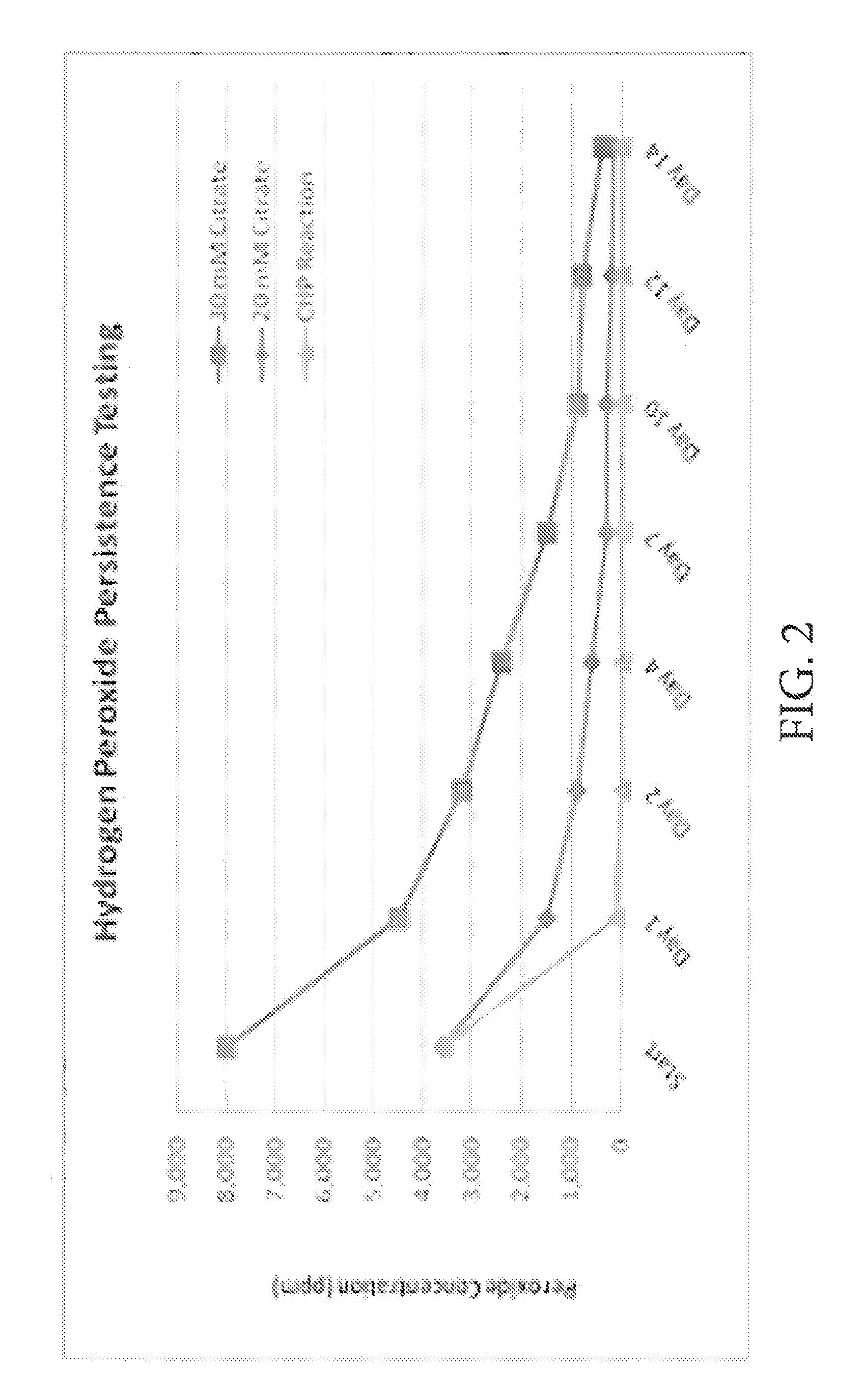Methods of using hydrogen peroxide for in-situ chemical oxidation treatment of soil and groundwater
- Summary
- Abstract
- Description
- Claims
- Application Information
AI Technical Summary
Benefits of technology
Problems solved by technology
Method used
Image
Examples
Embodiment Construction
[0016]Disclosed are methods of custom stabilization of the hydrogen peroxide used in healthy and safe in-situ treatment of soil and ground water. In one embodiment, disclosed is a method of in-situ chemical oxidation treatment of soil and / or groundwater using CHP wherein the hydrogen peroxide has been stabilized with carboxylate salt (e.g., sodium citrate, sodium malonate, or sodium phytate). Procedurally, chemical daylighting is avoided by: (a) mixing a batch of aqueous hydrogen peroxide solution at ten percent concentration with a carboxylate salt; (b) injecting the solution into a subterranean location, wherein the injection flow rate is maintained at a level of one gallon per minute or lower; (c) allowing iron that is naturally present in the in-situ environment to mix with the solution to result in a CHP reaction; (d) controlling the subsurface pressure (20 to 30 pounds per square-inch (psi)) and temperature (100 to 120 degrees Fahrenheit) within the in-situ environment; (e) ma...
PUM
 Login to View More
Login to View More Abstract
Description
Claims
Application Information
 Login to View More
Login to View More - R&D
- Intellectual Property
- Life Sciences
- Materials
- Tech Scout
- Unparalleled Data Quality
- Higher Quality Content
- 60% Fewer Hallucinations
Browse by: Latest US Patents, China's latest patents, Technical Efficacy Thesaurus, Application Domain, Technology Topic, Popular Technical Reports.
© 2025 PatSnap. All rights reserved.Legal|Privacy policy|Modern Slavery Act Transparency Statement|Sitemap|About US| Contact US: help@patsnap.com


